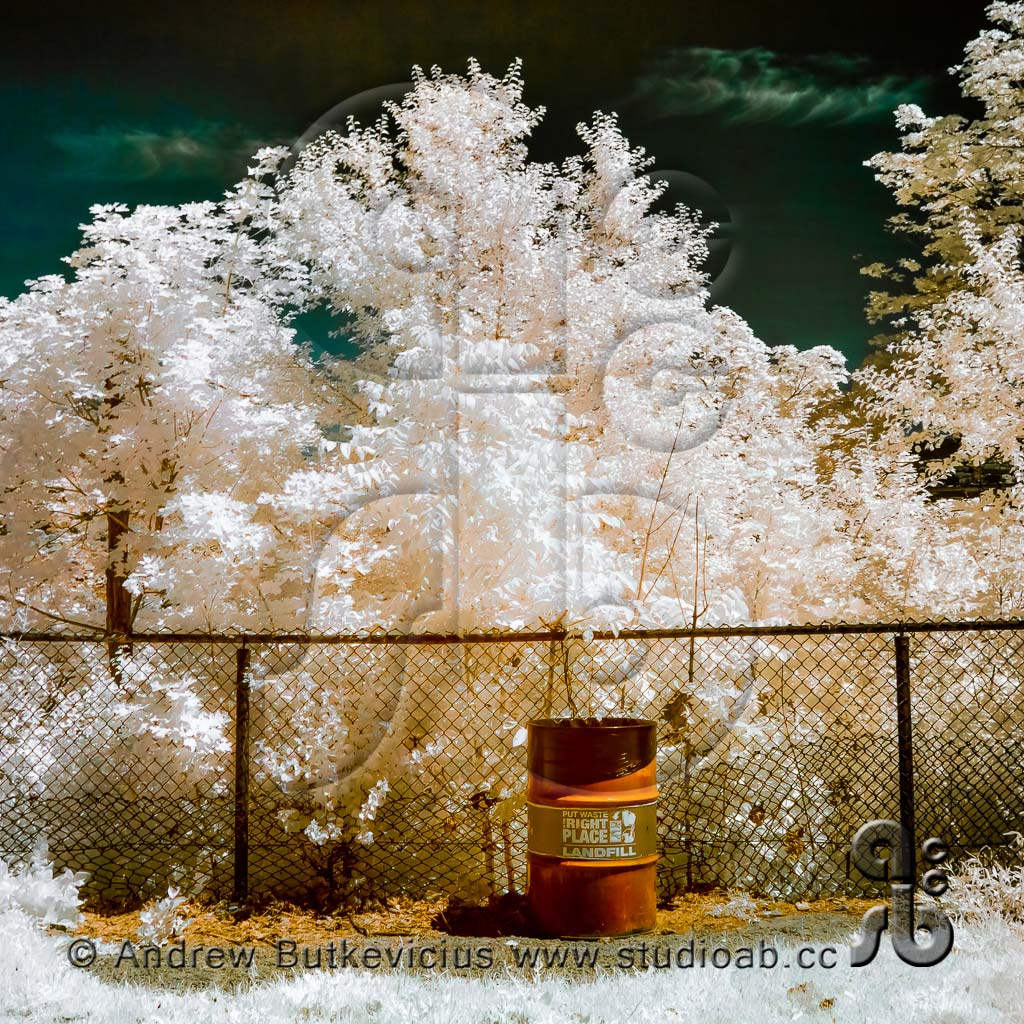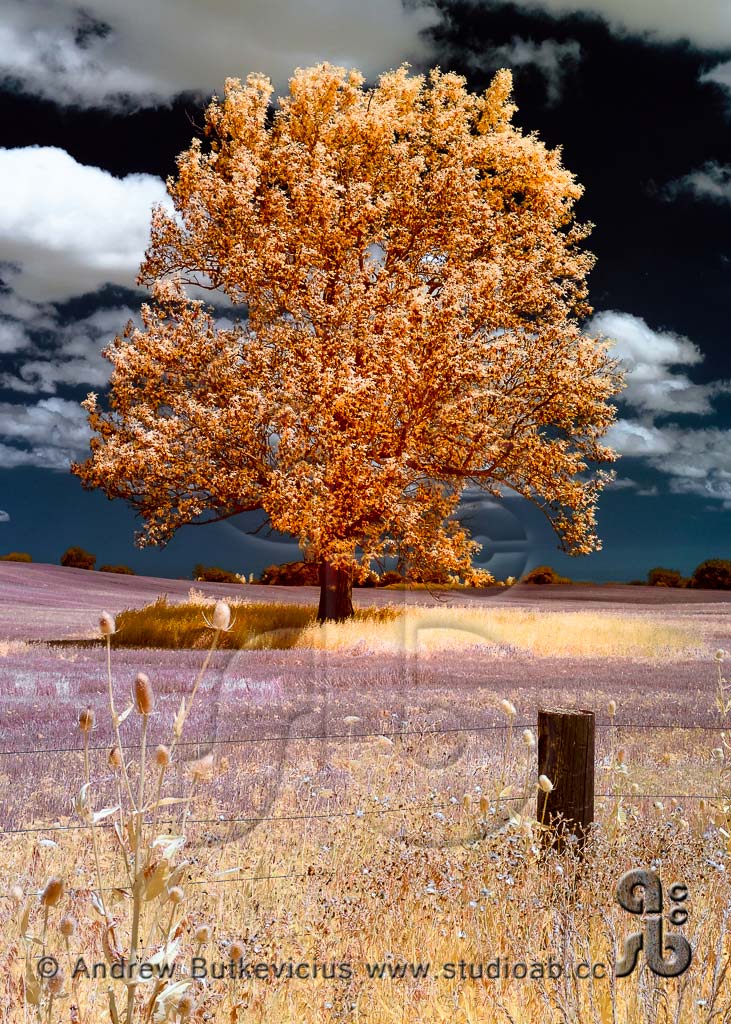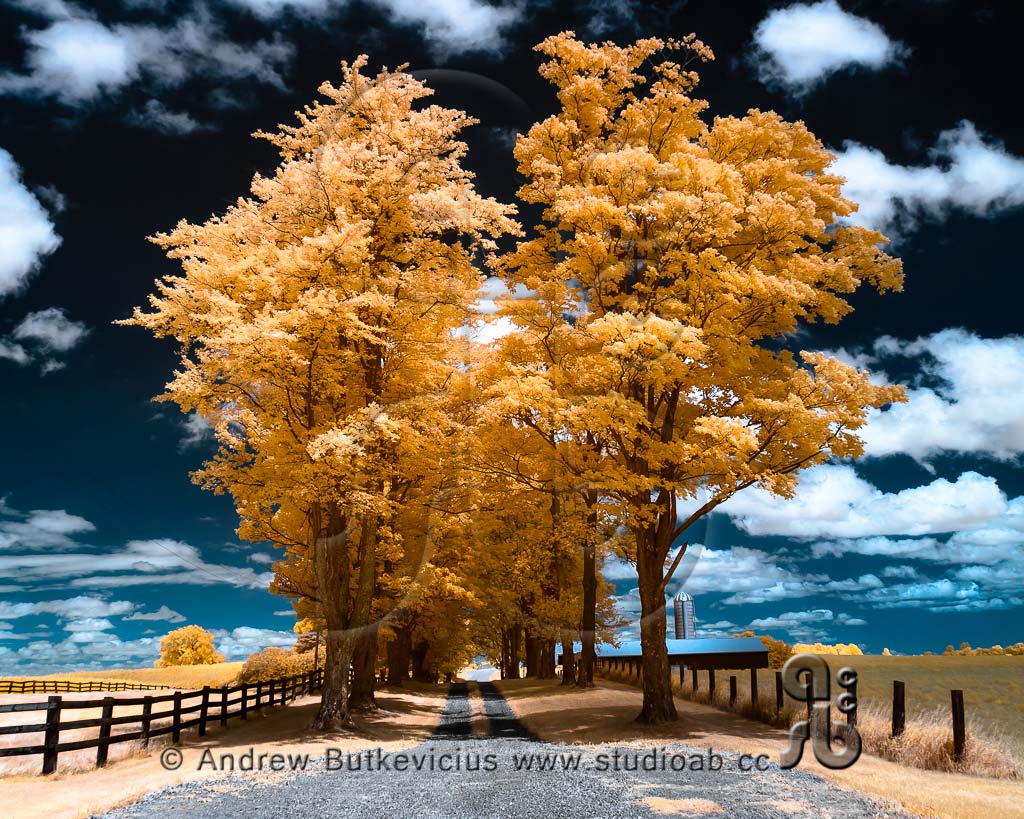Infrared landscapes uniquely place the viewer in the scene. As with all I.R. photos they can create a heightened sense of presence, but I find this effect is best expressed in landscape photographs.
[su_row][su_column size=”1/2″]The first part of the photographic process starts with looking for a subject. For landscapes, this involves a lot of walking. Finding that special view where the trees and grass catches the light just right, waiting for the clouds to move into position as if choreographing some grand performance, requires both determination and patience. However, if I only had to do one part, this would be it. Not because I am a health nut (in my dreams) but because the process is all about discovery.[/su_column] [su_column size=”1/2″]What is unique about shooting in I.R. is that when a potential vista is found, and I hold up the camera, the world transforms before me. I have actually fallen over more than once wondering around in dream land. Tones which once blended together stand out in stark contrast, the horizon becomes clear for miles, and everything green glows in brilliantly white toned colors.[/su_column] [/su_row]
Infrared photographs do require a great deal of fine tuning to really make them stand out. It is during this editing process that the details become apparent and I recall that same sense of walking in a dreamland.
What is most unique about the whole I.R. process is its ability to transform the day to day into the exotic and mysterious.
















